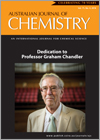
Australian Journal of Chemistry
Volume 71 Number 4 2018
Dedication to Professor Graham Chandler
CHv71n4_FOCelebrating Professor Graham Chandler’s 80th Birthday
The foreword to this special issue of the Journal dedicated to Professor Graham Chandler provides an account of his distinguished career in theoretical chemistry and also describes his many scientific achievements.
CH17359First Year Introductory Chemistry at the University of Western Australia: Reflections and Perceptions
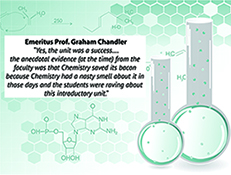
This study investigated the motivations and attitudes of two student cohorts enrolled in an introductory chemistry unit, which Emeritus Professor Graham Chandler helped to create. An interview with Graham describes the origins of this unit. Therefore, this study has particular interest in this special issue celebrating Graham’s career in chemistry.
CH17501A Computational Investigation of the Uncatalysed and Water-Catalysed Acyl Rearrangements in Ingenol Esters

Ingenol-3-angelate is a potent anticancer compound. This work uses double-hybrid density functional theory to investigate the reaction mechanisms (uncatalysed and water-catalysed) for acyl rearrangements in this compound. These rearrangements may affect the potency of the drug and its shelf-life. We find that a water catalyst leads to a significant reduction in the reaction barrier heights for the acyl migrations.
CH17566Structure and Bonding in Hexa-tert-butyl-hexa-peri-hexabenzocoronene Sandwich Complexes of Ruthenium
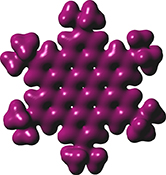
Electronic effects, not sterics, dominate the site selectivity of ruthenium coordination compounds.
CH17583Investigating the Resonance in Nitric Acid and the Nitrate Anion Based on a Modern Bonding Analysis
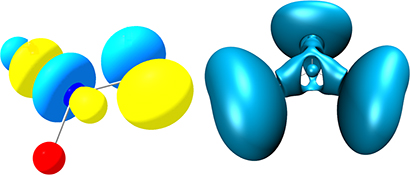
The bonding situation and resonance in the nitrate anion NO3− in comparison with the related species nitric acid HNO3, FNO3, and KNO3 are investigated with a set of modern bonding descriptors from experiment and theory. Usefulness and limitations of the simple Lewis model are revealed by quantitatively assessing the weights of the Lewis structures as well as the non-Lewis contributions.
CH17588The S66 Non-Covalent Interactions Benchmark Reconsidered Using Explicitly Correlated Methods Near the Basis Set Limit
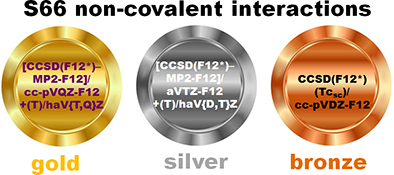
The S66 benchmark for non-covalent interactions has been re-evaluated using explicitly correlated methods with basis sets near the one-particle basis set limit. We were able to establish convergence to the basis set limit on all components. The best compromises between accuracy and computational cost are graphically represented above.
CH17564Beyond the Woodward-Hoffman Rules: What Controls Reactivity in Eliminative Aromatic Ring-Forming Reactions?
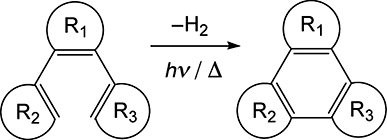
In this paper, we explore the influence of ring size and composition on thermal and photochemical eliminative cyclization reactions.
CH17621Modelling the Effect of Conformation on Hydrogen-Atom Abstraction from Peptides
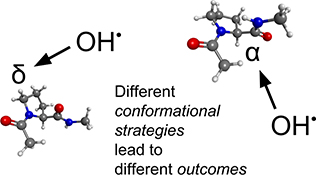
A ‘consistent-conformation-pathway’ approach to the study of hydrogen-abstraction reactions of small peptide models provides information that may be more relevant to larger peptides and proteins than the information obtained by the more commonly used ‘minimum-energy-structure pathway’ approach.
CH17581Anion Photoelectron Spectroscopy and High Level Ab Initio Calculations of the Halide–Nitric Oxide Dimer Complexes
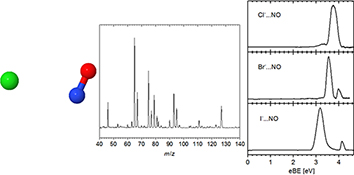
Gas phase complexes formed between halide anions and the nitric oxide molecule are investigated via ab initio calculations, mass spectrometry, and photoelectron spectroscopy. Experimental electron binding energies are provided, along with predicted geometries and binding energies for the clusters.
CH17573Mechanism for Three-Component Ni-Catalyzed Carbonyl–Ene Reaction for CO2 Transformation: What Practical Lessons Do We Learn from DFT Modelling?

Our DFT study reveals mechanistic details of nickel-catalyzed three-component coupling for transforming CO2 into a homoallylic alcohol. Our results point towards several key factors for an efficient reaction, and reaffirm the utility of computational modelling in the design of advanced reactions.
CH17620The Polymorphs of ROY: A Computational Study of Lattice Energies and Conformational Energy Differences
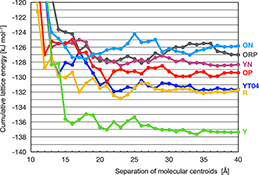
The structural diversity in polymorphs of the flexible molecule ROY challenges computational attempts to predict or rationalize their relative stability. This work explores the reliability of CE-B3LYP estimates of relative lattice energies combined with conformational energy differences.
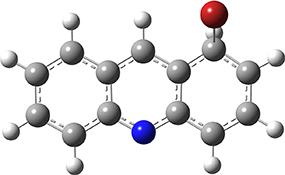
This is the first report on the bromination of acridine since 1954. The bromination of acridine made in concentrated sulfuric acid and also acetic acid afforded only two species containing one bromine, with 4-bromoacridine the major product in sulfuric acid and 2-bromoacridine the major product in acetic acid. Knowing the substitutional patterns for electrophilic substitution in aza-aromatic compounds is important fundamental information.
CH18024Facile Synthesis of Pentamethylcyclopentadienyl Ruthenium Half-Sandwich Complexes by Naphthalene Displacement

Ruthenium half-sandwich complexes are central in a wide range of diverse applications in the field of organometallic chemistry. As such, exploration of their preparation and reactivity is crucial for development of their chemistry. We present alternative synthetic methods for Cp*Ru(dppm)Cl, Cp*Ru(dppe)Cl, Cp*Ru(dppf)Cl, [Cp*Ru(COD)(MeCN)]+, and [Cp*Ru(bpy)(MeCN)]+ starting from the easily accessible [Cp*Ru(η6-C10H8)]+.
CH17624Is it Reasonable to Obtain Information on the Polarizability and Hyperpolarizability Only from the Electron Density?
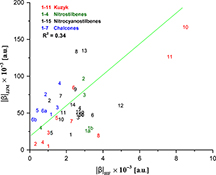
Formulae for the static electronic polarizability and hyperpolarizability are derived in terms of moments of the ground-state electron density matrix and then tested against coupled-perturbed Hartree-Fock results for a set of 40 donor-π-acceptor systems. For the polarizability, the correlation is reasonable; by constrast, the results for the hyperpolarizabilities are poor, not even within one or two orders of magnitude.
CH17402A Safe and Simple Synthesis of 1,4-Bis(trimethylsilyl)buta-1,3-diyne
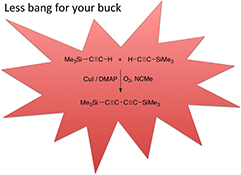
A simple, multigram-scale preparation of 1,4-bis(trimethylsilyl)buta-1,3-diyne that minimises risks associated with the preparation of this useful compound is reported.
CH17582A Theoretical Study of the Astrochemical 13C12CS + H → 12C13CS + H Reaction
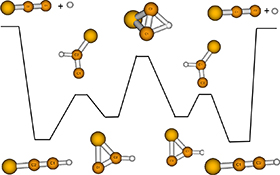
The reaction mechanism involved in the exothermic carbon isotope-exchange reaction 13C12CS + H → 12C13CS + H was determined by means of highly accurate ab initio calculations.



